Header image: The future of agriculture? Nick Dragotta
Yield Ideas, Tips & Guides
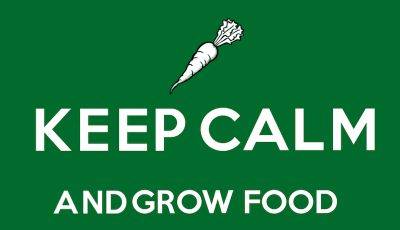
Oca-li-docally
I wasn’t going to grow oca (Oxalis tuberosa) last year, but I wanted to support The Guild of Oca Breeders (GOB) in their efforts to breed new varieties more suited to the UK climate, and so I ended up with one of their supporter packs (which are sold out for this year, although you can still sign up to be an experimental grower) of 12 different varieties.

Could Quantum Dots Reduce the Cost of Indoor Farming?
By Sam Humphrey

UK food shortages: how growing more fruit and veg in cities could reduce the impact of empty supermarket shelves
Jill Edmondson, University of Sheffield and Jonathan Leake, University of Sheffield
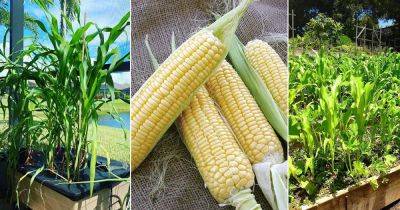
When to Plant Corn in Georgia
If you are not sure about When to Plant Corn in Georgia, then it can result in a poor harvest. This guide will ensure you won’t any troubles!

How To Grow A Baby Corn Plant
If you’ve eaten Chinese food, you’ve probably come across baby corn before. You’ve probably also thought: “is baby corn real corn?” How is baby corn made? Many people take a look at baby corn and assume it comes from a dwarf corn variety, but it’s actually exactly what it sounds like: immature corn cobs. So how do you grow baby corn? Keep reading to learn about growing baby corn in your own garden.
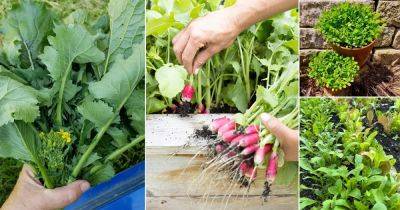
15 Vegetables You Can Plant in August and Harvest in September
As the golden warmth of summer winds down, many believe it’s time to hang up their gardening gloves. Whether you’re a city dweller with limited terrace space or just someone looking to optimize their garden yield, here’s a list of Vegetables You Can Plant in August and Harvest in September!
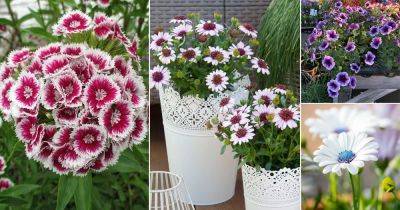
11 Stunning White Flowers with Purple Center
These exquisite white flowers with purple centers are a sight to behold. They add a touch of sophistication and allure to any garden or floral arrangement.

How Far To Space Zucchini Plants | Zucchini Plant Spacing
Zucchinis are the ultimate summer squash, producing an abundance of delicious and versatile fruits that can be used in a variety of dishes. But in order to get the most out of your zucchini plants – Zucchini Plant Spacing is the key.

Best Watermelon Companion Plants and the Bad Ones
Read on to learn about the Best watermelon Companion Plants and also the bad ones that will ensure you get the best and juicy fruits!
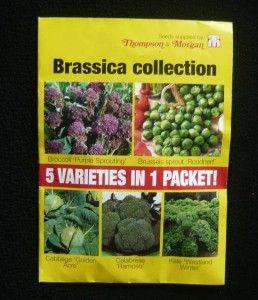
Gourmet Vegetable Production
There are as many different vegetable plots as there are gardeners and everyone has its place. My default position is clear, I seek good yield or output from lower effort and less space than in previous decades.
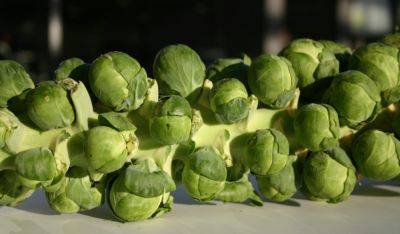
Brussels Sprouts Difficulties
Good, firm, mild flavoured Brussels Sprouts are a heavy yielding crop that only need a bit of care and consideration. Here are our top tips.
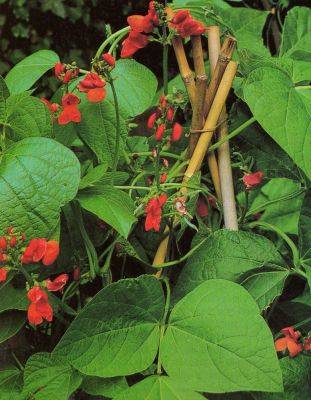
New Gardeners Should Try Runner Beans
One of the easiest and highest yielding vegetable crops to grow are runner beans. You may not need all these 5 tips to do well but here goes:

My Books on How to Garden
My Garden Books
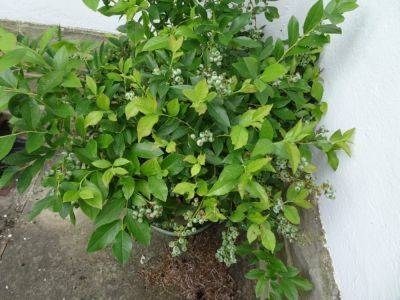
Blueberry Growing My Best Tips
It has taken 7 years to get a good crop of blueberries from my plants in a 12″ pot. See my earlier more detailed blueberry GTips from 2014.
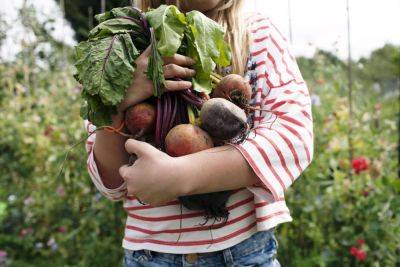
How Should We Measure Success in a Garden?
Are you successful in your garden? This is a question that is not as easy to answer as you might think. I have been thinking lately about how we should measure success in a garden and why it is important to answer this question as a sustainable gardener.
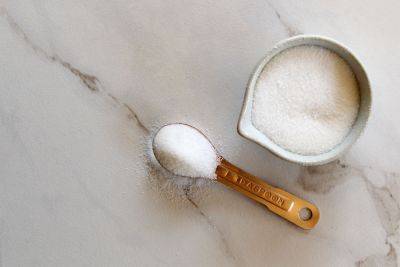
What to Know About the Looming Sugar Shortage
Sugar shortages have hit the U.S.—and they might mean that it costs you way more to stock your bowls with Halloween candy this year.
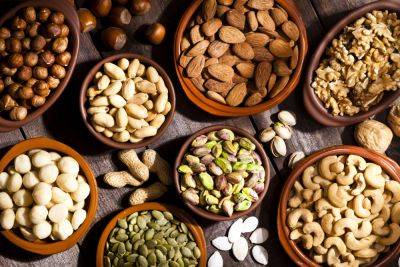
Nuts Really Shouldn’t Be Stored in Your Pantry—Here’s Why
When most of us have a hankering for nuts, we tend to look no further than the pantry. It’s totally normal for nuts to be stored in the dark corners of our cupboards, with many taking residence there for what can turn into many months (especially if you shop in bulk). But did you know the pantry is actually not the best place to house nuts and seeds?

Is Electroculture Gardening the Next Great Thing in Plant Care?
Home gardeners always seek new and innovative ways to improve their gardens and increase their yields. This is particularly true now, when at-home fruit and vegetable gardening is becoming increasingly popular.
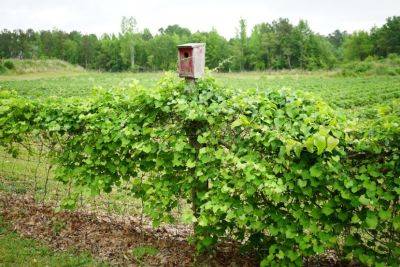
Pruning Muscadines
Muscadine grapes (Vitis rotundifolia) are native to the Carolinas, making them a relatively low-maintenance fruit that is well adapted to our warm and humid climate. Gardeners experience very few problems with this small fruit. However, one of the problems I hear about from time to time is low fruit yield. This problem can be attributed to many different reasons such as sunlight, poor pollination, nutrition, or lack of proper pruning. Proper pruning should be done on an annual basis to keep the plants at a manageable size and to allow the plant to use its energy for fruit production versus shoot and leaf production. Muscadines should be pruned when they are dormant, so now is the perfect time. Keep in mind that the vines will drip sap or “bleed” if pruned too late but this does not harm the plant.
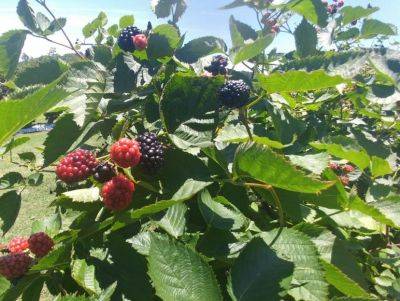
Blackberries
Blackberries are an excellent addition to a southeastern garden: they are easy to grow, produce abundant fruits that are delicious, highly nutritious and very healthy (blackberries are among the fruits with a highest antioxidant content). On top of this, they are versatile and can be consumed fresh or used to prepare jellies and classic southern desserts such as blackberry cobbler and pies. Also, currently there are many thornless varieties available that fit very well with the demands of backyard gardeners.
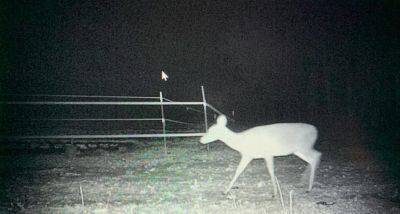
SC Fruit and Vegetable Field Report – January 25, 2021
Rob Last reports, “Strawberry crops in the area are looking good with good crown development. We are seeing open flowers and some fruit set based on warmer conditions. These crops are cause for some concern as we are likely to see damage from forecast cold snaps. There is evidence of botrytis (gray mold) in crops on cold damaged flowers and fruit. Sanitation can really help to mitigate the spread of the disease. Spider mites remain active and in places are requiring treatment. Remember to avoid pyrethroids for mite control as these can flare mite populations.”
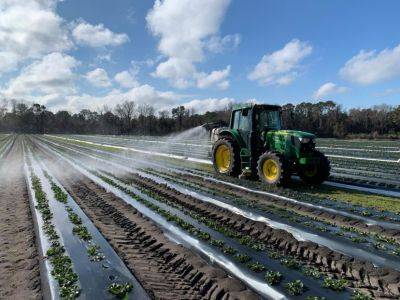
SC Fruit and Vegetable Field Report January 19, 2021
Dr. Matt Cutulle reports, “Burndown herbicide efficacy can be reduced in colder weather, especially systemic products such as glyphosate (Reduced translocation in the cold means herbicide does not move through the plant as much).”

SC Fruit and Vegetable Field Report – May, 3, 2021
Rob Last reports, “Botrytis (gray mold) is evident in places following rainfall. Sanitation and removal of the infected berries are critical to reducing inoculum loading. Fungicide applications will also be required to prevent spore germination and further spread of the disease. Where spider mite treatments have been applied, they have effectively reduced the populations but will still require scouting and monitoring. The yields achieved are very good. Cucurbit crops continue to develop well with a low incidence of chill injury from the cooler temperatures observed on April 21/22. Crops are running well, with some flowering being observed. Cucumber beetles are being monitored, and a few aphids are present in places. Cucumber beetles observed are currently below the threshold of 5 beetles per plant. Squash bugs are also being found on some sites. Careful monitoring will be required because numbers can increase rapidly. Crops are free from disease; however, protectant fungicides are still a critical input. Blueberries are swelling well and beginning to blush. Blackberries are flowering with excellent fruit set and bud formation. Spider mites have been evident in these crops, too; however, miticide applications are proving very effective.

How to Brine a Turkey: Wet and Dry Brining
It is time to think about how you are going to prepare your Thanksgiving turkey. How do you prepare yours? Have you ever tried brining to add flavor and moisture? Brining meat is the process of adding salt before cooking to add moisture and flavor. A turkey can be brined using a wet or dry process. It is important to consider both methods before choosing which one you want to use. Both ways produce a flavorful and moist turkey but have other important considerations that may impact your choice.

SC Fruit and Vegetable Field Report – November 8, 2021
Zack Snipes reports, “It feels like winter showed up this past week with cold, windy, gloomy days. Most, if not all of our strawberries have been planted. With the cool weather showing up and our later planting dates this year, some growers are opting to use lightweight row covers to push their plants along a little bit. A few things to remember if you opt to do this: use lightweight row covers, make sure all disease and insect issues are taken care of before putting the row covers on, and only leave them on for a few weeks. We want to encourage some growth of our plants, but we don’t want our plants getting too big and succulent going into the winter. I visited several farms this week with poor-quality fruit trees. A common thread between these plantings is planting depth. In our sandy soils, plants will sink over time, so as Phillip Carnley says, “plant them proud,” which means plant them higher than you think they should be planted. Over time, the plants will settle into the correct depth. Pecans, blueberries, and other crops will not grow roots from their trunks, so over time, the plant will rot, and pathogens will get into the plant when they are buried too deep.”

SC Fruit and Vegetable Field Report – September 13, 2021
Zack Snipes reports, “We had a heavy downpour of rain last week, surpassing 2.5 inches in some spots. I am seeing downy mildew in cucumbers and lots of gummy stem blight in winter squash and pumpkins. The worm pressure has lessened in the past few weeks. I am seeing lots and lots of black rot in transplanted brassicas. Inspect your plants before planting them to make sure the disease is not coming from the nursery. Once a brassica is planted in the field, there is not much we can do to slow the spread except hope that environmental conditions (rain, humidity) are not conducive to spread the disease. I am also seeing lots of early weed pressure in fall planted crops on both bare-ground and plastic. We have some very good herbicide options to apply preplant. However, once you plant the crop, we have very few herbicides that can be used over the top of the crop. Right now is the time to get down strawberry herbicides before the season starts. As the old proverb goes: an ounce of prevention is worth a pound of cure.”

SC Fruit and Vegetable Field Update – February 28, 2022
Tom Bilbo, Extension Vegetable & Strawberry Entomologist, reports, “As temperatures warm up in some areas, make sure to scout for spider mites in strawberries. Spider mite feeding on plants early in the spring before plants start fruiting can result in significant yield reductions later. Plants can tolerate much more spider mite feeding once harvesting begins, but protection at earlier stages is critical. It is also much easier to get good management when you suppress mite populations early in their population growth before their numbers start taking off. It is recommended to treat pre-fruiting strawberry plants at a threshold of 5 mites per leaflet (one-third of a leaf). Scout for mites by sampling at least 10 leaflets per acre, collected randomly throughout the area and taking an average of the mite numbers. At this time, it is best to use a miticide that is effective against all life stages (eggs, larvae, and adults). Achieving good mite management at these early stages can keep you in the clear for the remainder of the season.”

Watering the Vegetable Garden
As you drink your recommended 6 to 8, 8-ounce glasses of water per day, don’t forget that your vegetable garden should also never be short of water this summer. Did you know that water makes up 80 to 90 % of vegetable and fruit weight? Water affects yield, fruit size, and quality. It also prevents a variety of disorders such as toughness, off-flavor, cracking, blossom-end rot, and misshapen fruit.

SC Fruit and Vegetable Field Report – May 31, 2022
Zack Snipes reports, “It seems like everything is coming in from the fields right now. We got some rain but could really use some more. I am seeing lots of aphids on a variety of crops (melons, cukes, eggplant). I am also seeing ladybird beetles and parasitized aphids in these fields, which means our predators are out there working for us. Bacterial wilt and Southern blight are starting to appear on tomatoes as well. Knowing the difference and preparing for next season’s crop is critical. It is getting hot and is still windy, so growers might consider adding one or more irrigation cycles to their fields. Remember that in our sandy soils, any irrigation event over an hour is just wasting water. More frequent 30-45 minute cycles are more efficient.”

SC Fruit and Vegetable Field Report – May 02, 2022
Zack Snipes reports, “It seems like everything happened all of a sudden this week. We are flushed with strawberries right now. I am seeing some anthracnose on berries and lots of spider mites. We only have a few weeks left in the season so take care of your crop to improve your bottom line. The tomato crop looks ok and, for the most part, disease-free. I saw a good number of issues on all types of squash this week. I received calls about yellowing and wilting squash. Upon further examination, we had a serious squash bug issue. They feed on the base of the plant and will make very healthy plants wilt. They are very good at hiding under the stems, in debris, or under the plastic, so stay still in one spot for a few minutes when scouting for them. I also found some powdery mildew on our squash.”

SC Fruit and Vegetable Field Report- 6/27/22
Zack Snipes reports, “It is hot and very, very dry in the Lowcountry. We desperately need some rain on the coast. Many irrigation ponds are at very low levels and may only have a week or so of water left. Peppers and other crops are wilting during the day, leaving fruit exposed which is causing lots of sunburn and sunscald. Other than it being very dry, our crops look amazing. The tomato and pepper crops are absolutely loaded right now. The markets, however, aren’t very good and lots of produce is being left in the fields. The heat and constant harvest of many crops have allowed spider mite populations to explode. We need to get on top of these to squeak out as much yield as possible and lower on-farm populations so that the fall crop doesn’t get inundated with them.

Small-Scale Gardening
When planting a traditional garden with conventional rows, approximately 100 square feet per crop per individual are necessary to provide fresh food for a season. An additional 100 square feet per person is required if additional crops are to be preserved. As an alternative, using a raised bed with small-scale divisions can yield an abundance of food per individual. A 4-foot x 4-foot raised bed organized on the scale of 1-foot x 1-foot divisions provides a reduction in space to 16 square feet for fresh foods. An additional 4-foot x 4-foot raised bed organized on the scale of 1-foot x 1-foot divisions can provide a total of 32 square feet if preserving for later use per individual. The idea of small-scale gardening revolves around the practice of intensive gardening in a reduced space.

SC Fruit and Vegetable Field Report- August 22, 2022
Justin Ballew reports, “We had a few rain events last week, and temperatures were a little cooler. Fall planted crops are growing really well right now, but due to the recent moisture, we need to pay close attention to our disease management programs. In pecans, I’m not seeing many additional nuts dropping. Hopefully, we won’t lose any more between now and harvest. Scab is still being managed well, but we are seeing some signs of black aphids. The treatment threshold for black aphids from now to harvest is 15% of terminals (check all the leaflets on a terminal bud) have one adult aphid and nymph cluster present.”

Hibiscus Ginger Tea
This beautiful red tea is not overly sweet and offers a big ginger punch. Great for parties or an afternoon tea for one!
Popular Topics
Our site greengrove.cc offers you to spend great time reading Yield latest Tips & Guides. Enjoy scrolling Yield Tips & Guides to learn more. Stay tuned following daily updates of Yield hacks and apply them in your real life. Be sure, you won’t regret entering the site once, because here you will find a lot of useful Yield stuff that will help you a lot in your daily life! Check it out yourself!

